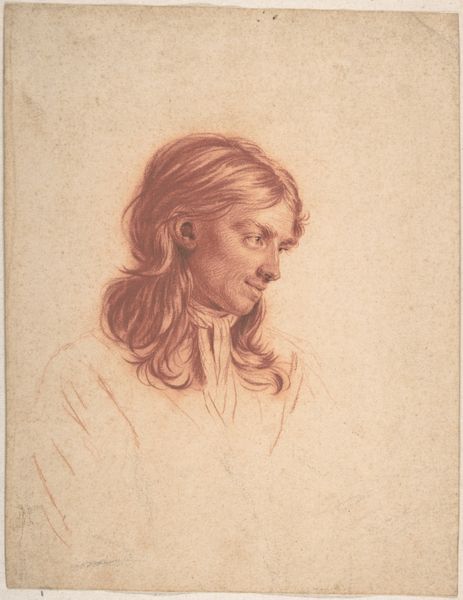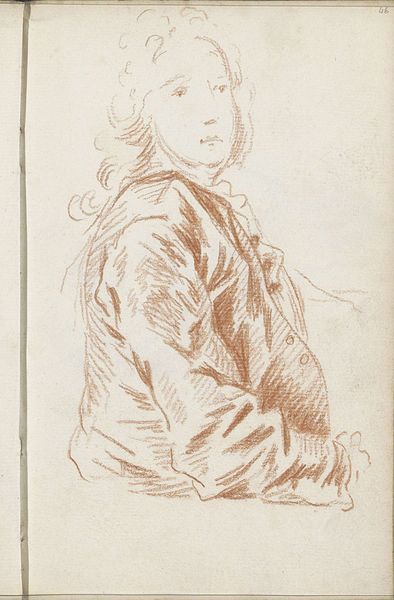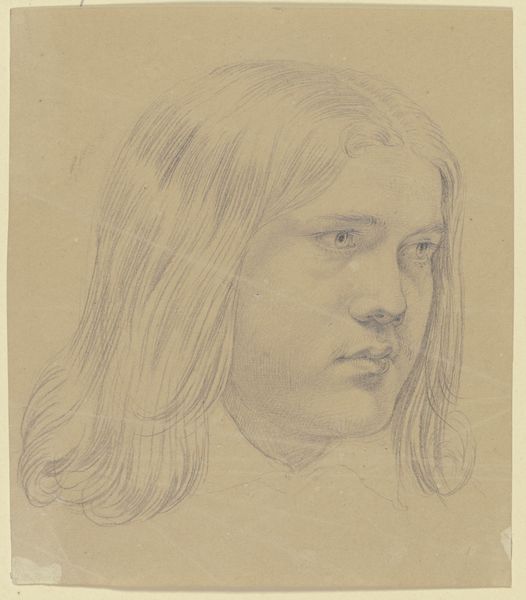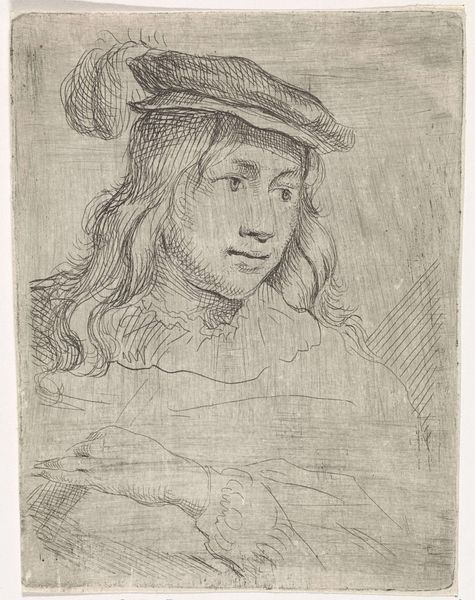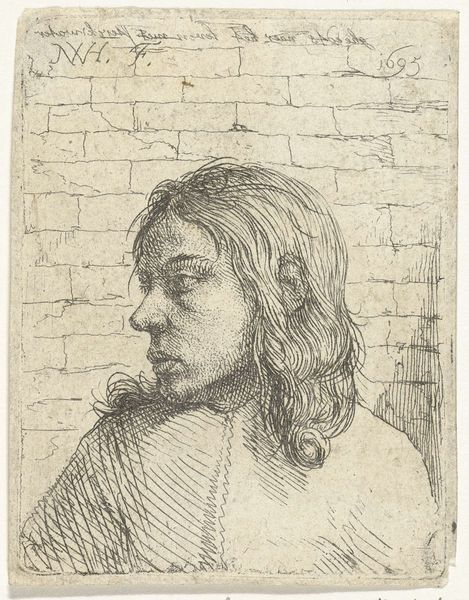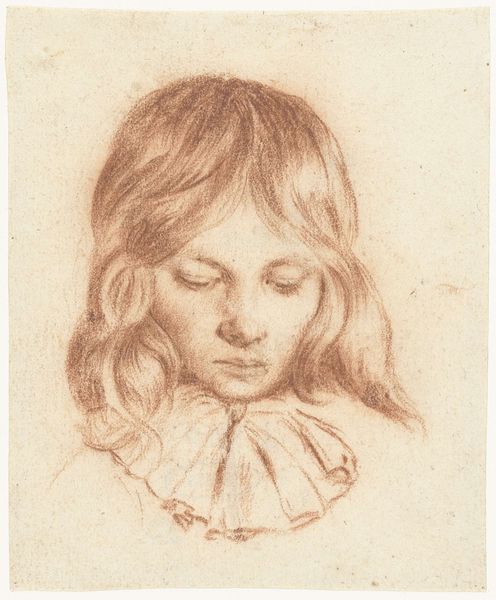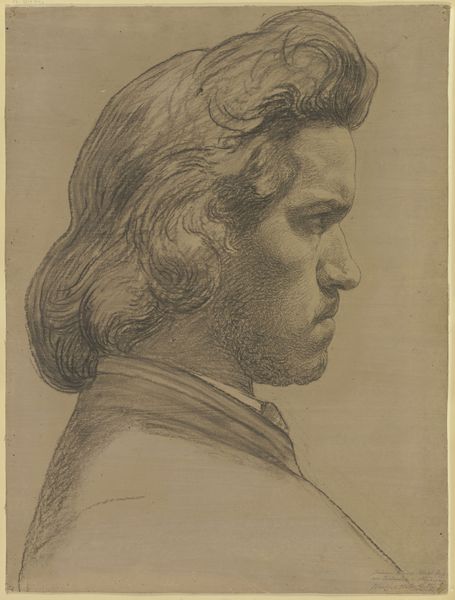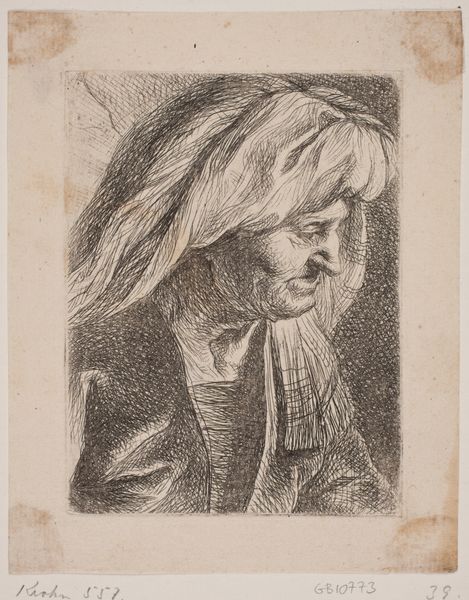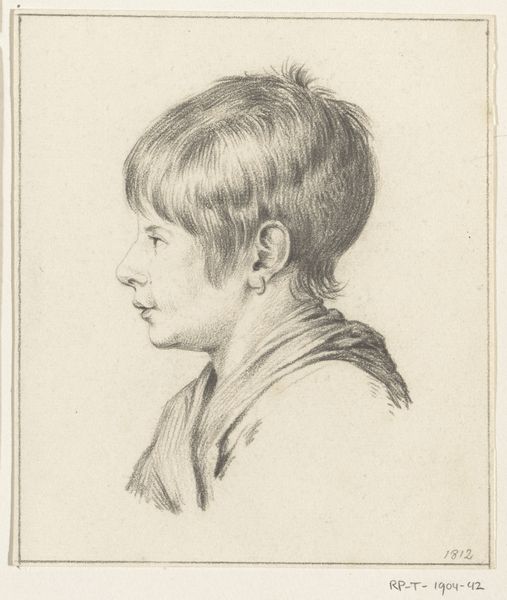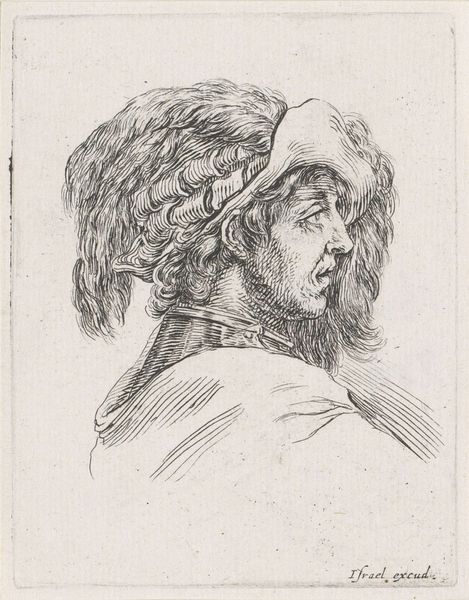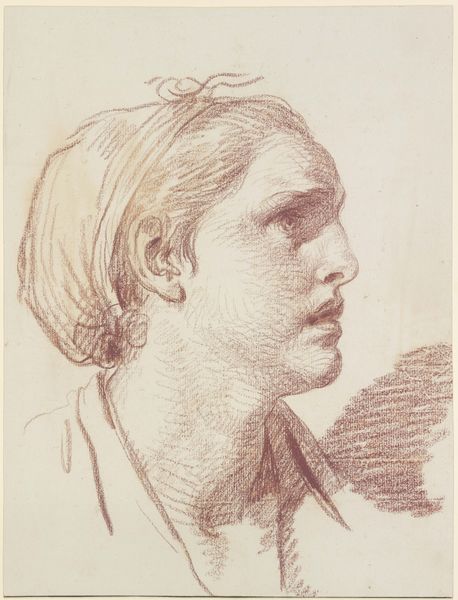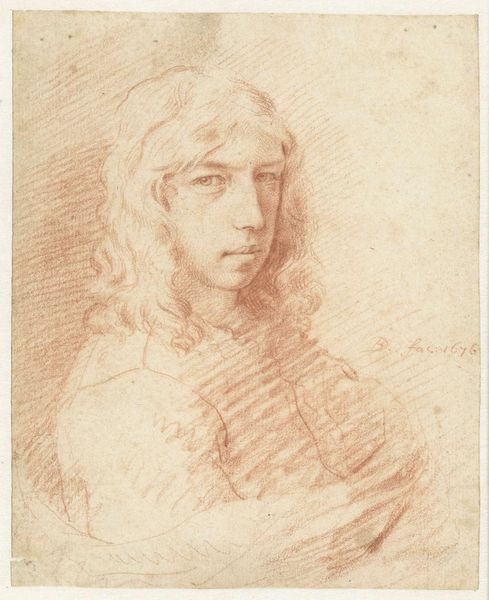
Dimensions: height 307 mm, width 205 mm
Copyright: Rijks Museum: Open Domain
Cornelis van Noorde made this portrait of Dirck Helmbreeker in 1772, using etching, a printmaking technique with a long and rich history. The etching process begins with a metal plate, usually copper or zinc, coated with a waxy, acid-resistant substance. The artist then draws through this coating with a needle, exposing the metal. When the plate is submerged in acid, the exposed lines are etched, creating grooves. These grooves hold the ink, which is then transferred to paper under high pressure. Look closely and you’ll see the characteristic quality of etched lines. Van Noorde has used a dense web of marks to define Helmbreeker’s face, hair, and clothing. The varying depth and thickness of the lines create a sense of volume and texture. Etching allowed for the relatively easy reproduction of images, making art accessible to a wider audience and fueling the growth of a print market. By understanding the materials and processes involved, we can appreciate how printmaking democratized art, bringing it into the homes and lives of ordinary people.
Comments
No comments
Be the first to comment and join the conversation on the ultimate creative platform.
